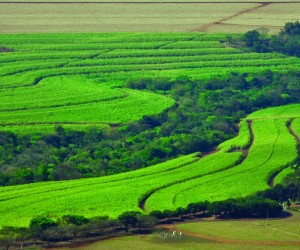For too long we have relied on and are dependent on environmentally high-value energy resources for thermal energy and nuclear energy. The issue of burning hundreds of millions of year-old plant matter instead of using virgin, viable plant matter is completely absurd to me.
It only highlights how the rate of consumption is unsustainable, that one would look to reserves of energy as a primary fuel source. Let us take the plunge and see where we end up in this Bio-Energy field.
Possible bio-energy sources
Bio-energy is a source of power (energy) that is derived or harnessed from plant matter. Since one is able to grow this source of energy it is inherently renewable. Biomass is stored solar energy in a chemical form that is developed via the process of photosynthesis. Some of the plants used as fuel sources include corn, soybeans, wood, sugarcane, grasses, bamboo and hemp. Yet, all plants have stored chemical potential energy that can be harnessed.
The trick is to harness those that give us the biggest bang for our buck in a sustainable and viable way. In recent times there have been major discussions regarding growing food vs. energy and the sustainability thereof. This has led to the advent of the ‘energy crop’. For energy crops to be sustainable one should pay attention to a few factors such as: water requirements, establishment protocols, soil requirements and long-term commercial viability. The key to planting a viable and successful energy crop is that it has to be low-cost and low-maintenance.
The crops receiving considerable press in recent times are those that are able to give high yields of biomass per hectare, while growing on marginal land, with the lowest demand for water for a specific territory. In many areas this would include various grasses such as switchgrass, elephant grass and bamboo varietals. These grasses have a high suitability for thermal energy and the production of electricity.
New studies show that these plants are also able to produce vast quantities of cellulosic bioethanol at greater quantities than your traditional plants, such as corn. These energy crops can be grown on marginal land and require less herbicides and water, rendering them considerably more attractive for energy use and the environment at large, from a carbon and energy perspective.
Both switch grass and elephant grass allow for the possibility of being used for both thermal energy and biomass gasification. There are also opportunities to use some of these plant types to substitute the use of coal in the thermal power station in the form of pellets or cakes.
Biomass is fast becoming the preferred energy source of many companies looking to reduce their carbon footprint, as they are able to support carbon sequestration projects while also being able to get a viable and reliable source of biomass for their thermal requirements.
Relevance of Energy Crops in South Africa
The potential benefits and impact of energy crops or planting for energy in South Africa is potentially earth shattering (no pun intended). Furthermore, South Africa has a unique problem in that a vast majority of the labour force is unskilled.
Agriculture and mining are the biggest employers of this group and with the demise of mining; unemployment has become a real scourge of society. This leaves a potentially enormous problem or opportunity, where our populous has potential for employment in that energy crops can begin to make in-roads to employ both skilled and unskilled labour.
For instance, a 15 000ha plantation of energy crop can create in the region of 75 000 direct seasonal jobs, if one were to use manual labour to harvest. What sweetens the deal is that biomass crops grow well on land that cannot produce cash crops and has little or no agricultural benefit whatsoever. A total of 15 000 ha of switch grass can use in the region of 185 000 tons of carbon per year. One is able to keep arable land for the growing of food and eliminate the competition that exists between food for mouths and food for fuel.
Due to the reduction of herbicides required to establish these plant varietals our water sources are also kept safe. Ground cover for soil stabilisation is initiated. Potential habitats for animals are restored and desertification is arrested.
The major benefit is that we would have a renewable energy source that does not require explosives and the desolation of our natural beauty and our environment. We are unable to purchase a new planet and we need to be custodians of what we have until Mr Elon Musk is able to get us to Mars. Even within the current status quo there is a business and ecological premise to investigate and procure energy crops. There are many options for energy (not just what we have been told and what has been popularised) and if not, here I am popularising this one.
Our rainbow nation can be superimposed with a green tint. It is imperative that business, government and all other relative stakeholders seek out easy, basic options that can be implemented to alleviate our current energy crisis.
Akona Maqashalala
[PULL QUOTE] Let us take the plunge and see where we land up in this bio-energy field
[PULL quote] Biomass is fast becoming the preferred energy source of many companies looking to reduce their carbon footprint
[PULL quote] A 15 000ha plantation of energy crop can create in the region of 75 000 direct seasonal jobs












